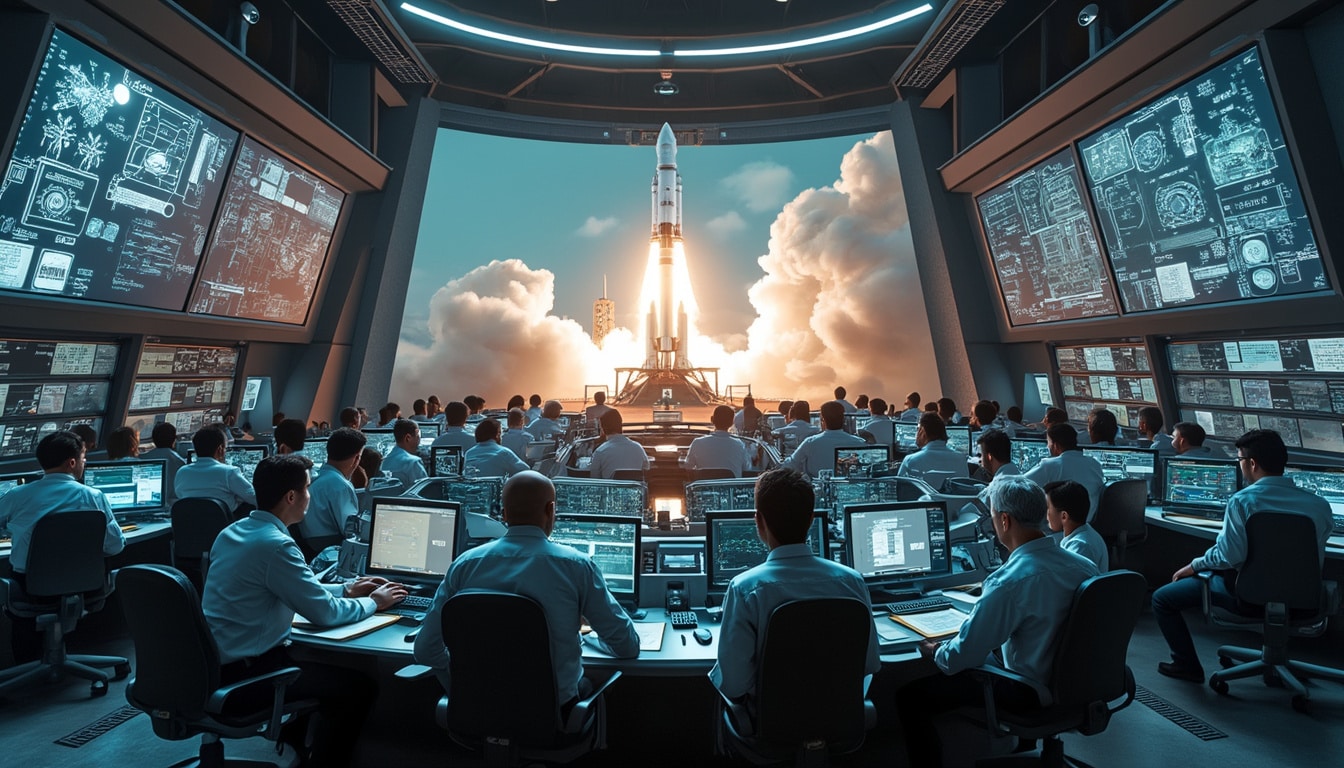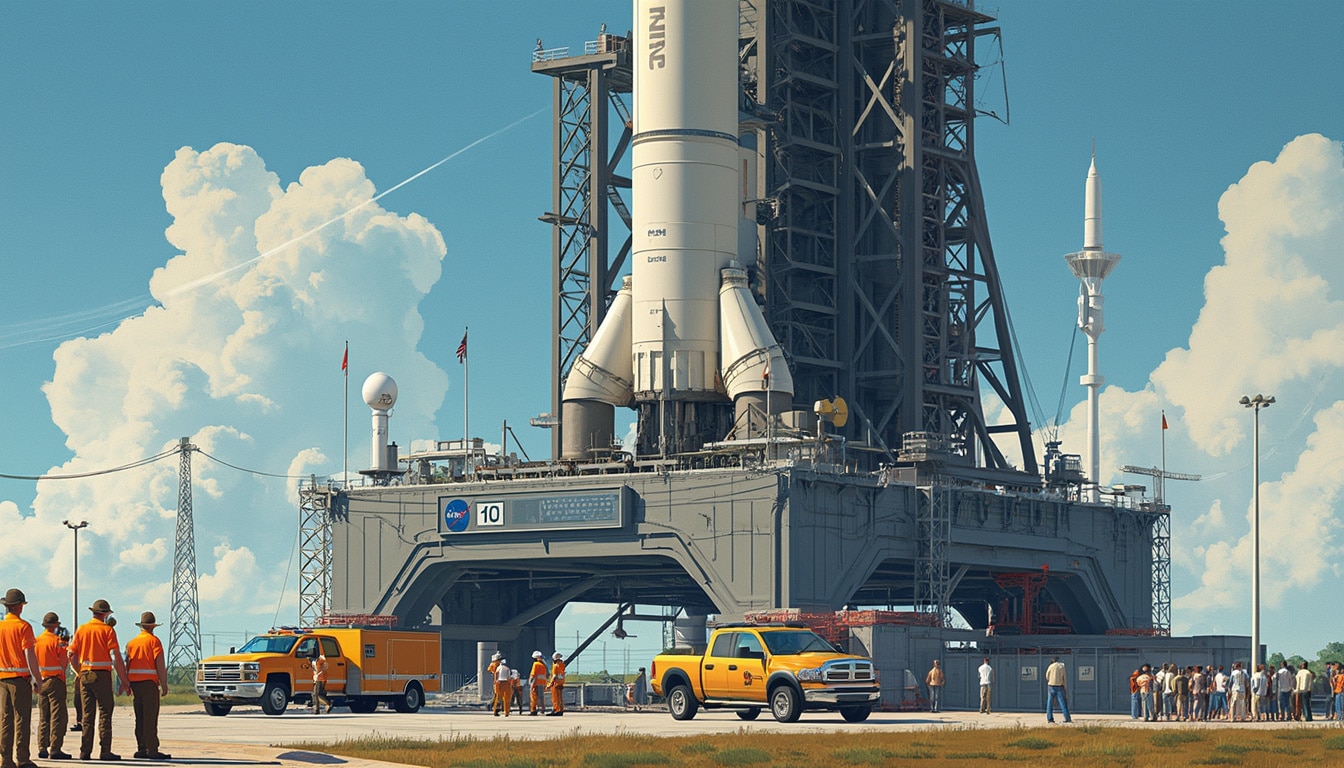As the landscape of space exploration continues to evolve, the recent leadership changes at NASA have sparked considerable debate and scrutiny. The appointment of Jared Isaacman as NASA Administrator raises essential questions regarding the influence of commercial entities, notably SpaceX, on the agency’s direction and operational integrity. This discussion delves into the implications of private involvement in government space missions, emphasizing the delicate balance between innovation and oversight.
SpaceX and NASA: A Complex Relationship
The partnership between NASA and SpaceX has proved to be a transformative force in modern space travel. SpaceX’s revolutionary technologies and cost-effective solutions have significantly reduced the burden on NASA’s budget, leading to a new era of exploration. The successful launches of Falcon 9 missions and the ongoing development of the Starship program, aimed at lunar and Martian expeditions, are indicative of this viable relationship.
However, the growing dependency on SpaceX has triggered alarms among the federal employees at NASA. There is a palpable concern that decisions made may prioritize the agenda of a private company over federal interests. This dilemma is exemplified by recent events wherein interim administrator Janet Petro directed NASA employees to eliminate contracts related to diversity, equity, and inclusion, raising eyebrows on governance standards and ethical practices.

Recent Leadership Changes and Their Implications
The recent appointment of Jared Isaacman has brought forth mixed reactions. As a billionaire and a private astronaut who previously financed his own mission aboard SpaceX’s Crew Dragon, Isaacman’s nomination can be seen as a strategic move. Nevertheless, his close ties to Elon Musk could influence NASA’s operational independence. Critics suggest that this appointment intertwines government space objectives with corporate ambitions, a potential conflict that might undermine NASA’s mission integrity.
Isaacman’s association with SpaceX raises questions about accountability and oversight. For instance, with Michael Altenhofen, a long-time engineer at SpaceX, joining NASA as a senior advisor, many employees fear a shift toward commercial interests that could overlook the required safety protocols and rigorous standards traditionally upheld by NASA.
The Influence of Elon Musk on NASA
Elon Musk’s influence within the federal government has become increasingly evident. With aspirations to cut costs and enhance efficiency, Musk’s ambitions align with similar objectives of the current administration. A new wave of governance, primarily characterized by disbanding longstanding committees like the National Space Council, has left room for private influence, particularly from SpaceX.
Musk’s open criticism of NASA’s operations, claiming they ‘stranded’ astronauts at the International Space Station, despite their safety, exemplifies the blurred lines between corporate messaging and governmental accountability. Such statements can create confusion and stress among NASA employees, contributing to already low morale.

Concerns from NASA Employees
Insider reports indicate that morale at NASA has reached unprecedented lows. Internal gatherings, designed to reassure staff, have met with skepticism as employees voice their worries about the unfolding dynamics under the new administration. A significant emphasis on cutting costs while ensuring safety has left employees feeling underappreciated and demoralized.
Moreover, the abrupt changes in contractual obligations and mission priorities fueled concerns about accountability. With personnel increasingly perceiving they are aligning with corporate interests rather than public service, the trust that underpinned NASA’s operational ethos is being eroded.
Potential Risks of Commercial Influence
The risks associated with increased commercial influence over NASA operations are manifold. In a rush to innovate or implement new technologies, safety protocols could become less rigorous. Recent calls from a NASA safety panel urging SpaceX to ‘maintain focus on safety’ highlight these concerns, especially after anomalies troublingly linked to their launch vehicles had occurred.
Moreover, the ambitious timelines touted by Musk can further exacerbate risks as they may not account for thorough inspection processes. Shortening programmatic timelines, under the pressure of private efficiencies, can lead to oversights that compromise the well-being of astronauts and mission objectives.

Ensuring Safety and Accountability
To navigate this shifting landscape, maintaining a balance between innovation and safety is crucial. Upholding rigorous safety standards while fostering an innovative spirit is necessary for NASA to meet its operational objectives in collaboration with SpaceX.
This might involve establishing clearer protocols regarding the oversight of contracts administered by SpaceX. Furthermore, transparent communication between NASA administrators and personnel can reinforce trust and morale among employees.
The Future of NASA in a Commercial Era
The future of NASA’s operations remains uncertain as it navigates through this commercial transition. The outcomes of Isaacman’s leadership, particularly concerning maintaining NASA’s integrity while embracing efficient commercial practices, will set a precedent for future space exploration governance.
Public scrutiny will need to be intensified to ensure accountability, especially regarding safety measures intertwined with such high-stakes missions. As commercial entities take on more significant roles in space missions, ensuring that public interest remains at the forefront will be paramount.





Leave a Reply